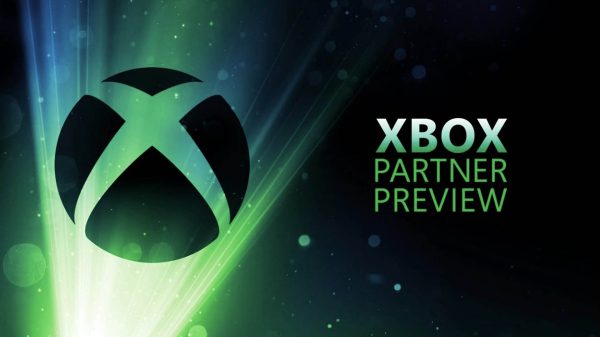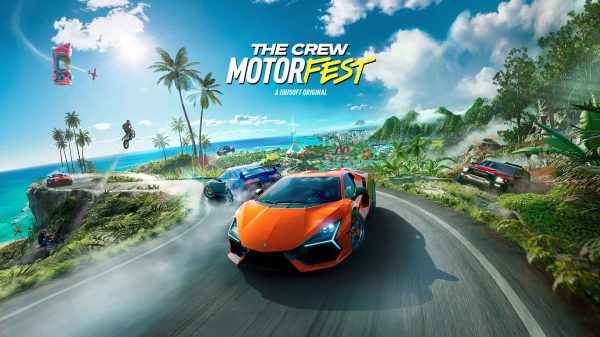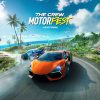The ever-growing Star Wars fandom is passionate, to say the very least. Each new entry into the decades-long franchise, whether it’s a movie, TV series or comic, is meticulously analysed and dissected for connections to the wider lore. New additions are often scrutinised, as well, for either playing it too safe or straying too far from the beaten hyperspace lane. Creating new content in the galaxy far, far away is a challenge that Massive Entertainment seems to be taking into its stride with Star Wars Outlaws. Set between Empire Strikes Back and Return of the Jedi, this open-world action-adventure title wants to mix together the familiar with the fresh, something that I got to discuss with two members of the development team.
During a recent press event, I was able to sit down with Star Wars Outlaws Associate World Director Cloe Hammoud and Lead Concept Artist Samuel De Vos to talk about the team’s design ethos, the pressures of expanding on such a beloved franchise and rewarding the most dedicated fans of the series.
WellPlayed: I’ve had the opportunity to play about six hours of Outlaws so far, and something that really stands out is the excellent sense of immersion. This is something that Massive Entertainment is known for, but the eerily empty cities of The Division and the wild jungles from Avatar are quite different to what we see in Outlaws. What was the design philosophy at the core of the game, and how did you approach making these alien worlds feel lived in and unique?
Samuel De Vos: It’s a very broad question. The methodology of creating a world that you believe comes from having a contextual vision of what is going on in the world. What is the context of the universe? Whether it’s The Division or Avatar or Star Wars, [we] make that the Bible when people are putting their own creativity into the game.
And that’s something that Massive has a lot of experience with from making some of those other games. Even though the context here is more vast, it’s much more established than what we’ve worked with before, the same principles apply, and a lot of that passion and love for creating detailed worlds is brought into that very complex context as well.
Cloe Hammoud: We try to ensure that every element in the game serves the story and leverages the gameplay because the world, as I like to say, is really at the crossroads of every discipline. This is where everything comes into play, and everything meets.
When we do world-building, when we start putting the assets in the game and when we craft planets and space regions, this is where we see things start to blend with each other. That’s when we can sit back and iterate, which we also do at the very beginning of the project.
As Sam said, it’s establishing the world logic for these different locations. It involves creating documentation that we call Planet Bibles for each planet, which defines a certain set of rules and guidelines for the team to understand the logic of the planet.
From the weather to the erosion, the natural elements, the fauna, the flora, the wildlife, the distribution, some heat maps of where the population would be, where you would have a river, those types of things, and ensuring that the team understand the vision, and then they can make some prepositions and creative suggestions.
WP: As mentioned, Massive is no stranger to big-name IPs, from Tom Clancy to Avatar. From a design standpoint, what are some of the challenges with building something new in an existing and beloved franchise?
SDV: You think you’re a Star Wars fan until you have make something for the fans. One of the [challenging] things is to try and catch up with the hardcore fan base, to make sure that everything that goes into the game is accurate and creates an authentic entry into the Original Trilogy, specifically.
There is so much that I’ve learned about. Very granular things, like where each language is spoken, how you write those languages, what all the different letters and symbols mean. On the lowest level, what would you see in the world that would make it feel lived in? Like a menu, for example, in a cantina. What would they eat? What would make sense? What is recognisable for the player? And what takes it too far away, making it feel too alien?
There’s really a balance to strike there, and so much information is already out there that it takes a lot of special care to educate yourself and to do the research.
In the end, it all comes back to when you create new additions, making sure that they are based on the same Inspirations of the Original Trilogy, in our case, to make it feel like it belongs in that time period.
WP: As daunting as it must be, I’m sure it’s pretty exciting to work with one of the biggest sci-fi universes of all time. What are some of the highlights from your experience designing for a Star Wars game? Was there anything that you were particularly proud to be able to sneak into the game?
SDV: One of the things with sneaking things into a game is that you really have to make sure that it doesn’t break immersion. So, when you do sneak things in, it might be a reference to a Prequel movie or to another relevant type of content in the Star Wars Universe.
One of the things that was really exciting to work on with the team was serving the hardcore fans who will translate every Aurabesh letter and adding a reward to that as well.
Sometimes, it’s not even the letters. Sometimes, it’s certain types of advertising that you will see in the game that might not mean much to a player who’s just running past, but if you’re analysing it and you’re looking for clues, you might be able to find something there. Those are the small details for me, specifically.
CH: For me, it’s really the diversity of environments and locations. The fact that we could create different cantinas that [each] have a different theme was a lot of fun. I took inspiration from visiting bars and restaurants to ensure that they have their own twist. It was very much a privilege.
You mentioned The Division 2, where we created a dystopian Washington D.C. and New York. Here, these cities are brand new. All of the elements, environments, and topography will feel different.
And you’re gonna feel that as a player. Driving, for example, the terrain on Akiva is gonna feel different from Toshara, with its wind-swept savannah. This is what we wanted to provide players with, and I’m particularly proud of Tatooine because we all know how it’s a very scrutinised location, so recreating Mos Eisley and the cantina, but also new locations, being able to add to this planet. I’m very proud of that, and I hope players will see the care and love that we put into it.

The design of the Ashiga Clan has a strong samurai influence that can be seen in their clothing and architecture
WP: The various crime syndicates look to be integral, both in terms of story and gameplay. From a design perspective, what goes into making each of the factions feel unique and recognisable?
SDV: Yeah, there’s the Ashiga Clan, which is a completely new addition to the crime syndicate world, and when creating that, we want to add something to the game that feels meaningful but easily distinguishable in its core values. If you look at the Ashiga Clan, there is really that hive mentality; they’ve been in the same place for generations upon generations. And they’re an alien species, they’re blind, and you’ll see that in the design of their outfits, but also when you navigate their stronghold, you’ll see certain hints at that in the architecture.
That was really awesome to work on with the team. Then, there are the more established criminal syndicates that already have defining characteristics. Crimson Dawn, for example, is a little bit more posh, a bit more aesthetic. And then there’s the Hutt Cartel, which is more brutal and has very muted colour palettes.
CH: But we have the opportunity within these established crime syndicates to create archetypes. For example, recreating Gamoreans for the Hutt Cartel was something that was super fun to do
When creating the Pykes, [who] have featured in the animated series, [we took] all of the different influences and translated them into a scoundrel game, which was very interesting. What type of detail would they have? Clothing, weapons, what type of colour palettes?
It translates into the faction territories, in their lighting, in some small details that we put around to ensure that players understand which faction’s territory it is, and whether they can walk in, depending on their reputation with them.
SDV: It affects the gameplay as well. It’s important that it’s very clear when you enter a crime syndicate’s territory. What do they do? If they smuggle a lot of wildlife, for example, it will be super clear because you will see a lot of cages stacked against the wall.
WP: Congratulations on nearing the game’s release, and thank you so much for your time.
Star Wars Outlaws releases on PS5, Xbox Series X|S and PC on August 31.
Adam's undying love for all things PlayStation can only be rivalled by his obsession with vacuuming. Whether it's a Dyson or a DualShock in hand you can guarantee he has a passion for it. PSN: TheVacuumVandal XBL: VacuumVandal Steam: TheVacuumVandal































